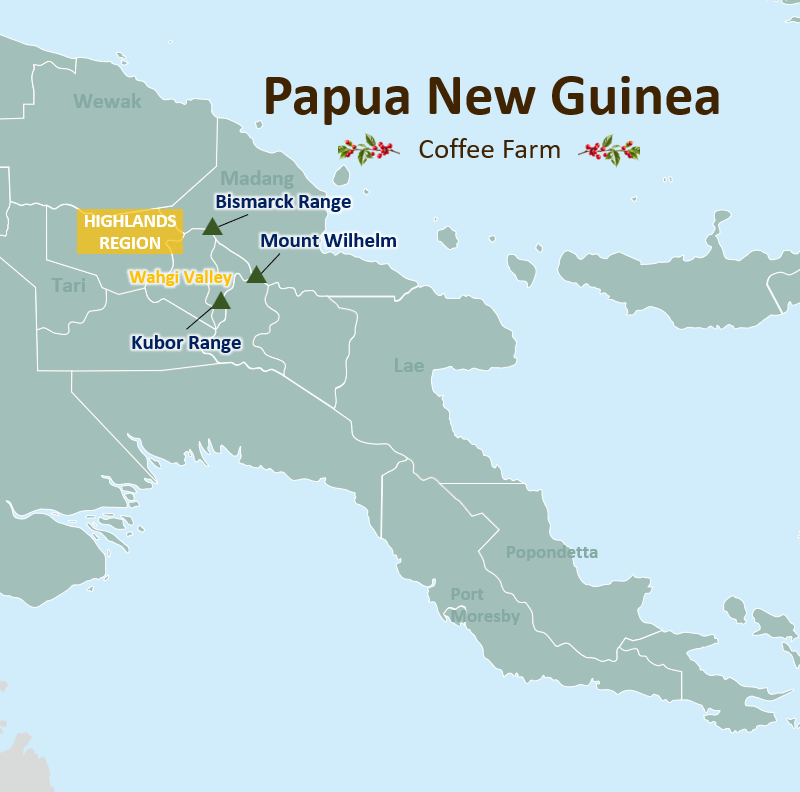Production Area
In the central part of New Guinea Island, which stretches from east to west, a vast highland region with 4,000 m above sea level peaks spreads out. Arabica coffee was brought to Papua New Guinea from Jamaica in around 1930, and it is said that full-scale coffee production began as it spread.

Central mountainous region (Highlands Region)
There are 19 mountains with the altitude of 4,000m class high.

・Mount Wilhelem (4,508m) *Peakware.com Archived from the original
In the rich forest around Wilhelm, Arabica coffee from Typica and Bourbon, which are close to the original species, is grown, and the fine water flowing from the mountains produces bright green beans.
・Mount Gilway (4,367m)
・Mount Finisterra (4,120m)
Mount Finisterra is said to be the highest mountain in the world as an unclimbed mountain.
The surrounding foothills are cool all year round, blessed with the sun and rain of the South Pacific, and coffee plantations spread out over the rich plateau.
・Mount Hagen etc
The surrounding plateau

The surrounding plateau is surrounded by abundant forests inhabited by wild birds such as the Bird of Paradise, and the thick forest at the foot of the mountain is a shade tree that protects coffee trees from the sharp tropical sunshine.
Wahgi Valley
The Wahgi Valley is a highland valley with an altitude of 1,500m to 1,600m between the two mountain ranges of Bismar Krange and Kubor Range that stretch into the Highlands.
The Highlands region has a cool climate, moderate rainfall, fertile soil, and an environment that is not easily affected by pests.
Traditional highland agriculture that has been cultivated for 9,000 years and skilfully used dead grass and as a result, sweet potatoes were cultivated with high productivity.
It is said that it was about 100 years ago that it became known that people live in the Highlands such as the Wahgi Valley.
During the Australian colonial era, roads leading to the area were built between 1950 and 1960, exchanges with the outside world began, and missionaries brought in saplings to spread coffee cultivation.
Coffee cultivation is expanding rapidly because the climate with large temperature differences between day and night is ideal for the growth of Typica and Bourbon Arabica coffee, and the mellow coffee harvested here is highly recognized around the world.
Coffee forest

The sun and rich rain in the South Pacific produce colorful coffee cherries and nurture wild birds.
The mellow aroma of coffee in Papua New Guinea is the gentle aroma of coffee grown in the rich nature of the South Pacific Ocean. The hemp bag is printed with Paradise Bird, which is a symbol of this rich forest.

